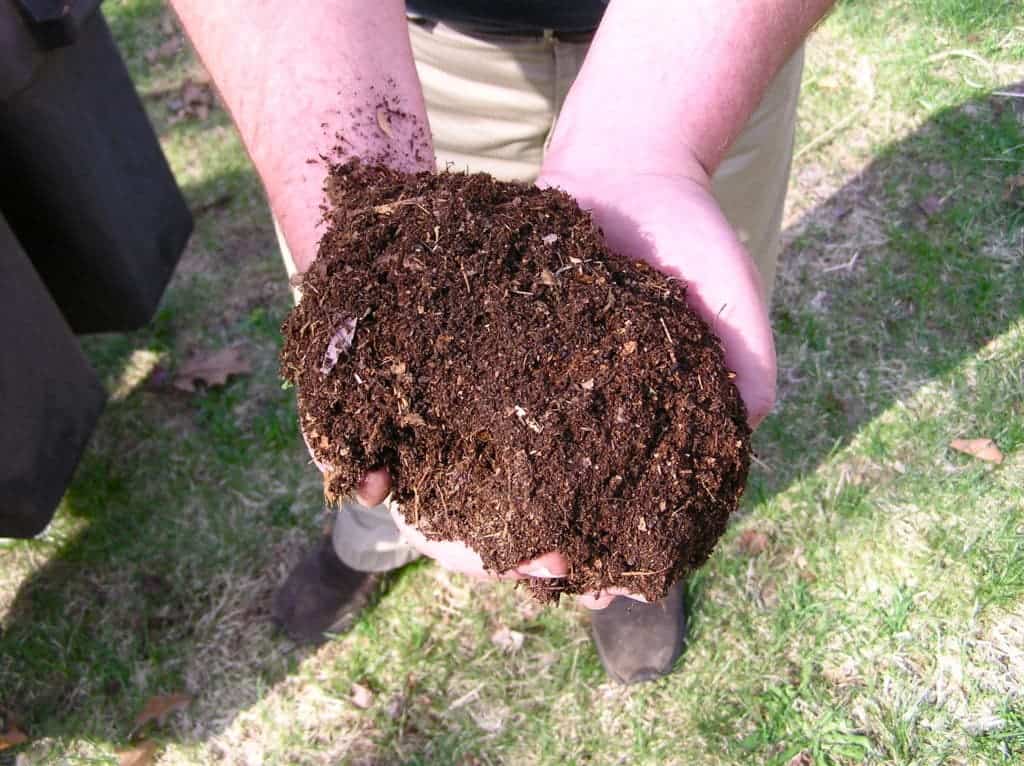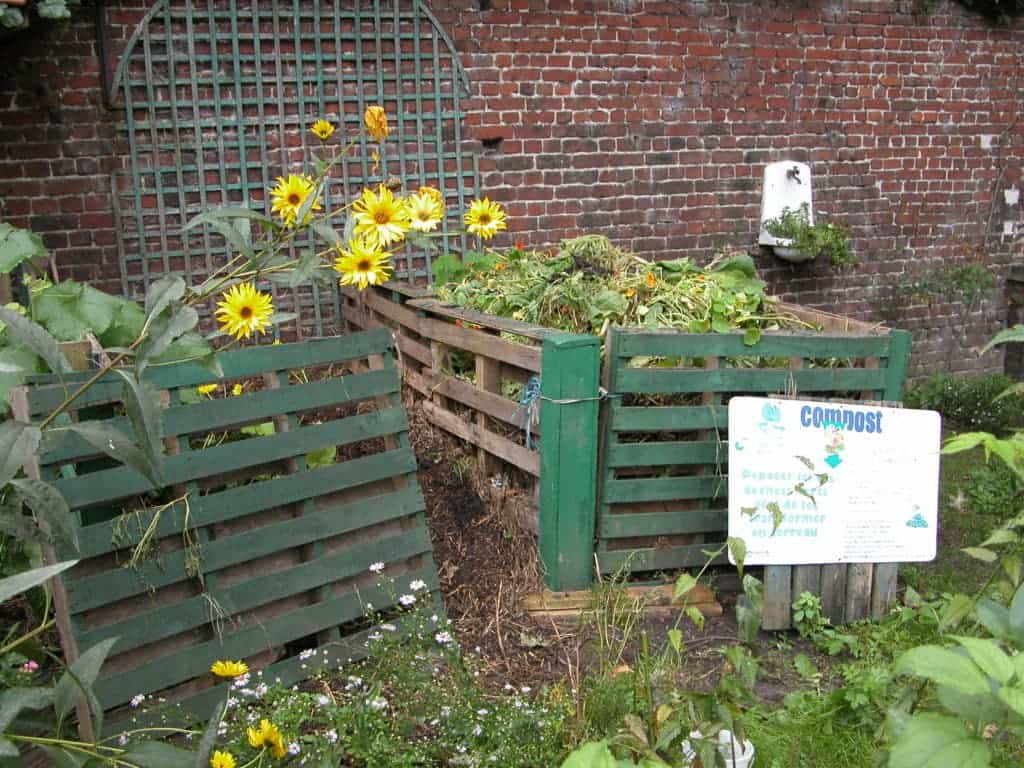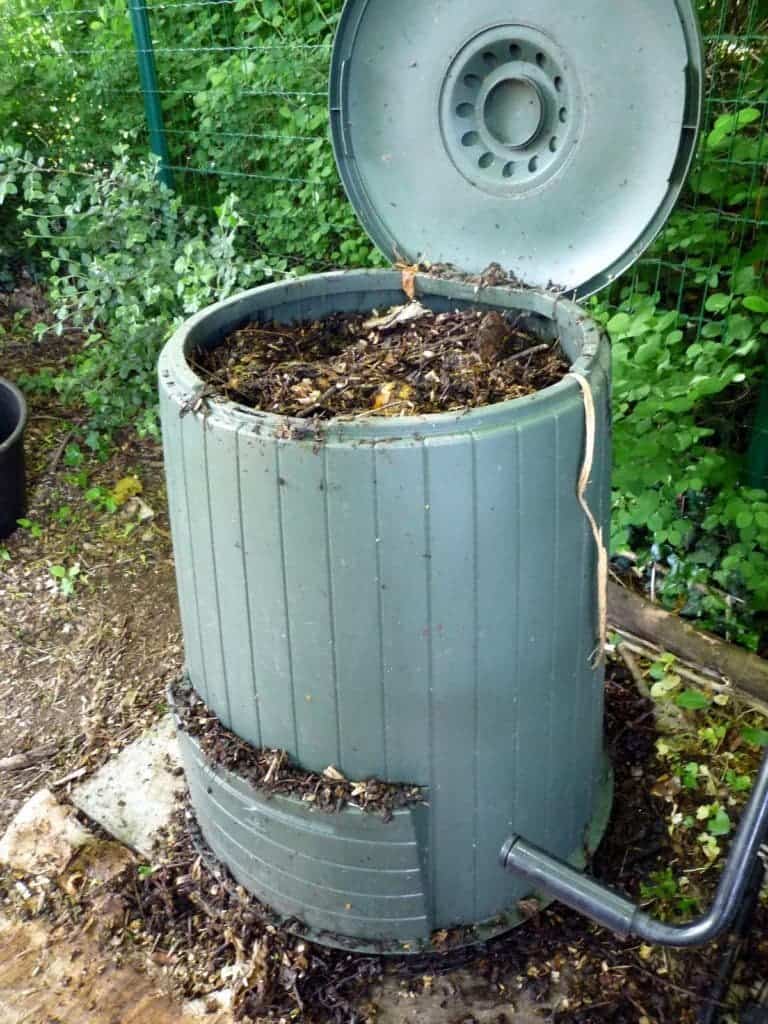Composting can make a big difference for the soil in your garden – or why not, even in your flower pots. If more people composted then we’d enjoy better soils, more productive gardens and better food. It’s a surprisingly simple practice which can go a long way.
What compost is

Composting is simply the breakdown of organic materials by microorganisms. Any organic matter that has been decomposed and recycled as soil fertilizer can be called compost, although of course different composts have different qualities.
This means that all you need in order to compost is some organic matter, water, air, and space. It’s the ultimate ingredient for rich, healthy soils. Compost is a key ingredient in modern organic farming and gardening, but people have been doing it for centuries. Of course, today’s know-how can aid the process, but you don’t need technology to make the compost at all.
So compost is simply decayed organic material used as a fertilizer for growing plants. Making compost is a natural process, you end up with a natural product, and as we’ll see soon, a very effective one at that.
Why compost
Some 20% of the waste in an average household can be composted. That’s useful organic matter we’re throwing away which could be composted. For the soils, this could make a huge difference. Compost contains a spectrum of essential plant nutrients – and that’s just for starters. It acts as a soil conditioner, a natural pesticide, and a fertilizer.

The advantages it brings are threefold: chemical, physical, and biological.
At a chemical level, compost:
- brings the pH level close to neutral, for both acid and alkaline soils.
- offers both macro- and micronutrients not present in most synthetic fertilizers.
- releases nutrients slowly and steadily — again, as opposed to synthetic fertilizers.
- it’s highly absorptive, retaining other fertilizers better.
At a particle level, compost:
- loosens particle cohesion, so roots can spread further and grow stronger.
- changes the soil structure, making it more resistant to erosion.
- prevents nutrients and fertilizers from washing out, keeping them soil-bound for more time.
For the biological life in the soil, compost:
- contains bacteria which break organic matter into easily available nutrients
- generally contains beneficial insects and worms
- suppresses some diseases and soil pests.
So your soil will be healthier and will support a healthy biota. These, in turn, will support healthier plants, and if you’re into gardening – a higher and tastier yield. It’s not a time-consuming process, you just do it once every few months.
How to compost

Ingredients
Every compost contains three things, best remembered as:
- Browns (carbon-rich) – Fallen leaves, twigs, and branches
- Greens (nitrogen-rich) – Usually grass, but also vegetable or fruit waste and coffee grounds
- Water – Having the right amount of water is vital for proper compost.
You should make sure to have equal parts of Browns and Greens, providing water for moisture to help break down the organic matter. If possible, also try to alternate layers of organic materials of different-sized particles.
Now, you can compost lots of things, but not everything. It’s very important to avoid composting:
- diseased plants
- any type of meat and fish
- any type of dairy
- any cooked food
- pet litter
- napkins
- ashes
- some perennial weeds (such as bindweed)
The composting area

You need some space for composting. Most people compost in bins, which means they can do indoor as well as outdoor. Outdoor is preferred, if possible. You can also compost out in the open air, it’s just that the bin keeps it nice and tidy. Some people build special composting spaces (something simple, like a big container) while others simply make a pile. Bins less than 1 cubic m (1.3 cubic yd) in size are much less effective than larger ones.
Ideally, choose a dry and shaded place for the compost. It also helps if it’s covered (the bing helps again), otherwise, the rain might mess up your water content. If it’s too sunny, then the water can also evaporate. Now, this isn’t too extreme, you just have to make sure that the compost isn’t subjected to extreme weather or humidity.
If you use a bin on the soil, an earth base can encourage drainage, which is a good thing. If the bin is placed on a hard surface, then add a bit of soil on the bottom of the bin, for the same reason – to facilitate drainage.
Composting
Don’t let one of your Browns or Greens dominate the compost – try to put equal parts and alternate them. Start by putting the woody material at the bottom to help with air circulation and layers of different materials at least 30cm thick. Make sure to shred large items so that they decompose more easily. Don’t let the kitchen waste on top, it will attract flies.
The bin/pile will heat up – don’t worry. This is a normal process associated with decay. After a few weeks it should cool down, and then you can have a look at it and try to turn it around, this will help with the process. Add more water if needed. Generally, compost should be ready within 2-4 months but if you don’t shred the big things, it can take much longer.
Common problems during composting
Composting is really easy and you’ll get a feel for it quite quickly, but if you’re a first-timer, then you should know how to identify the most common problems:
- Compost is wet, slimy and smells bad. This means that there’s too much water and too little air. Cover the pile up to stop the rain from coming in and add a bit more chopped browns to suck up the water.
- Compost looks dry, fibrous, and starts to rot. This is the opposite problem – there’s too little water and too many browns. Add some more greens and water.
- Flies in my compost. This is caused by kitchen waste – cover it with more garden waste. Make sure there’s not too much water.
So there you have it! Making compost is easy, doesn’t take much of your time and it can do great things for your garden – we really recommend trying it out.


